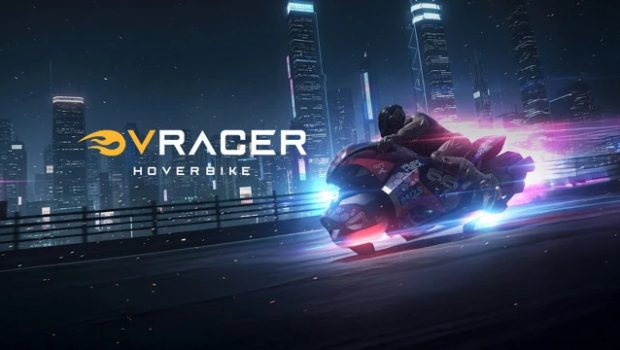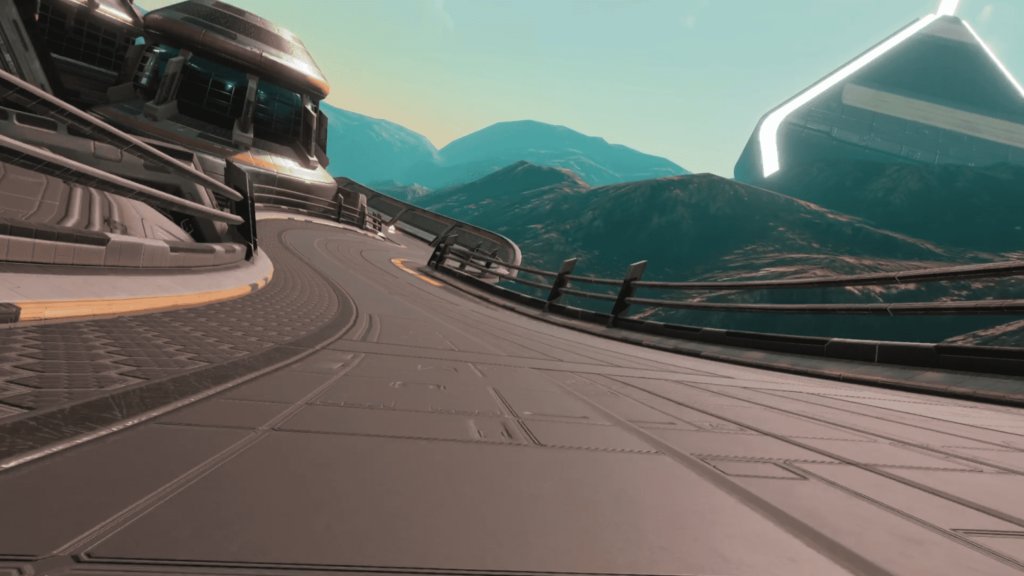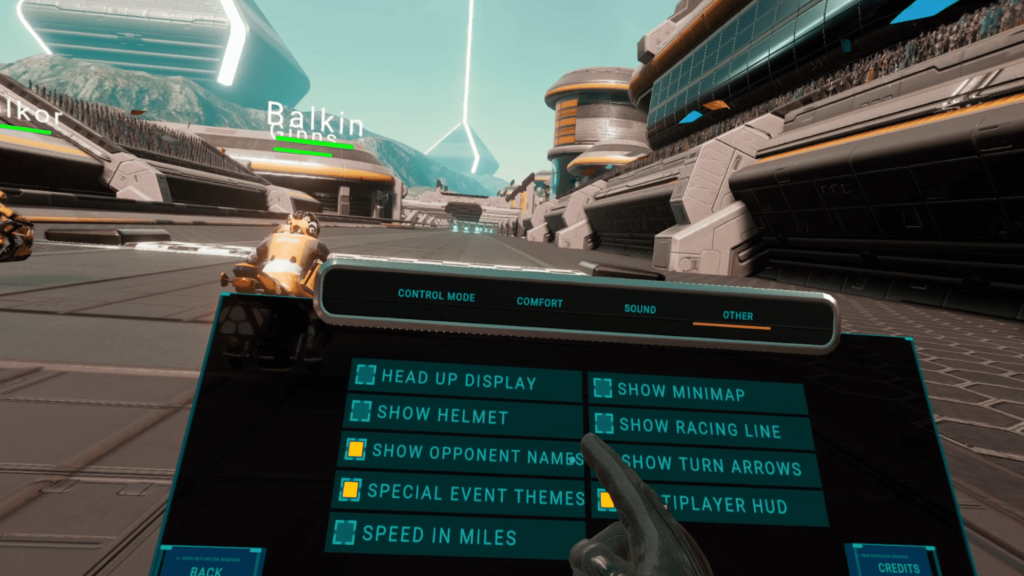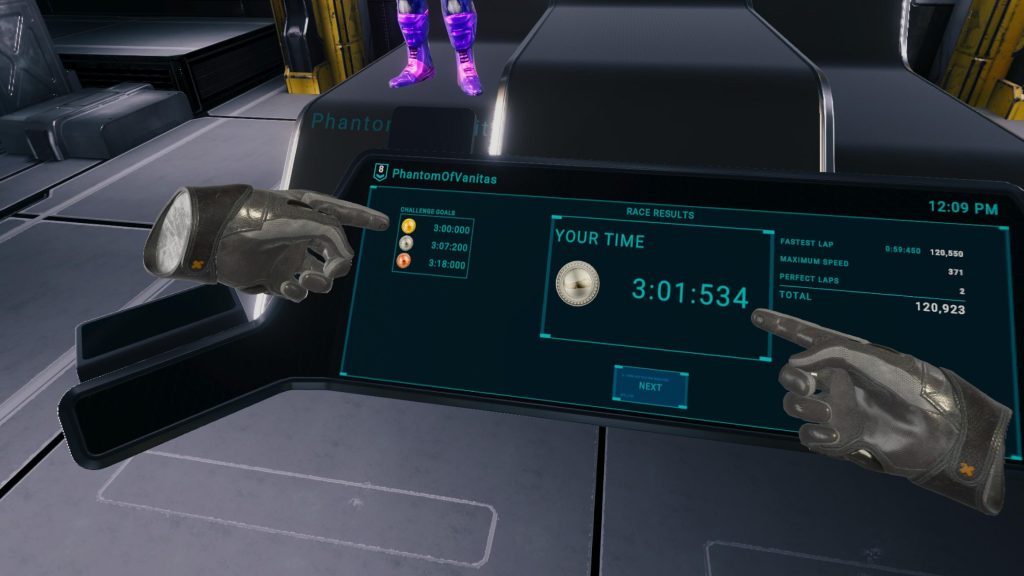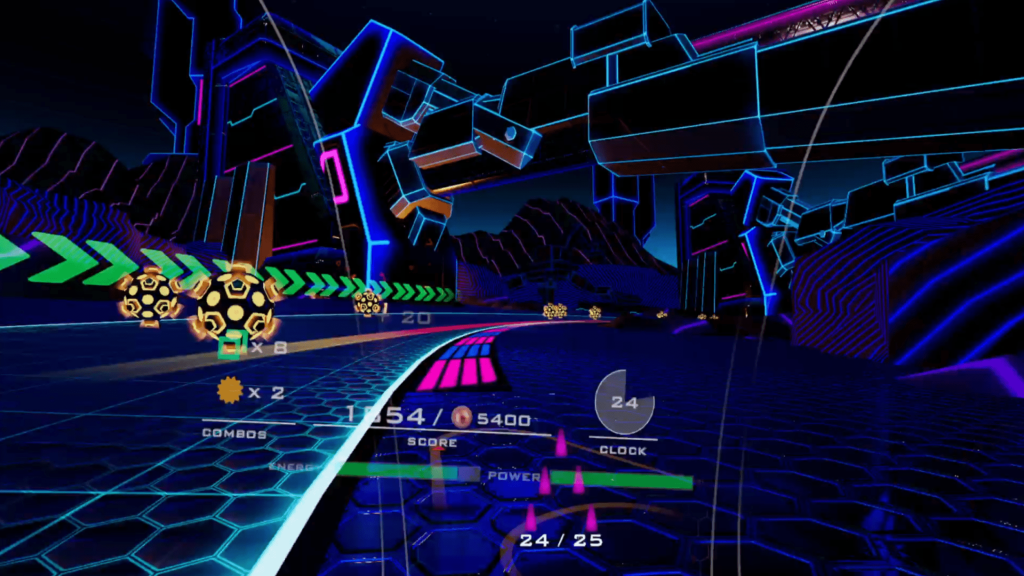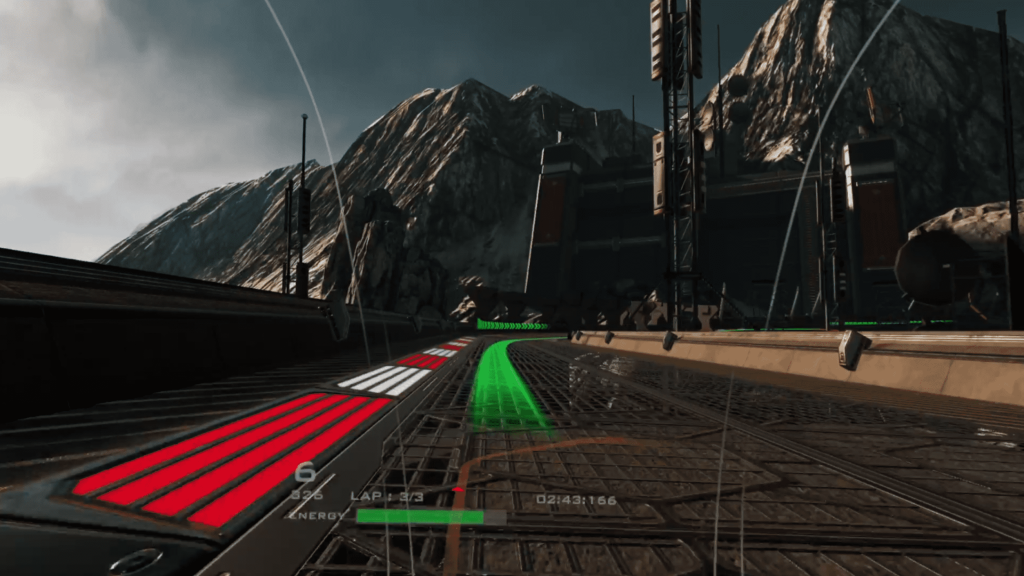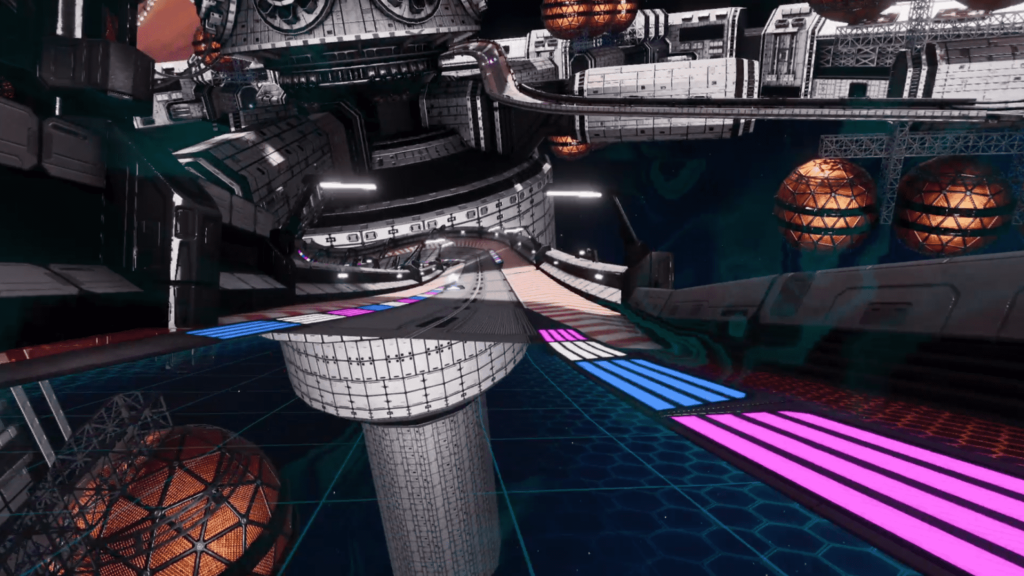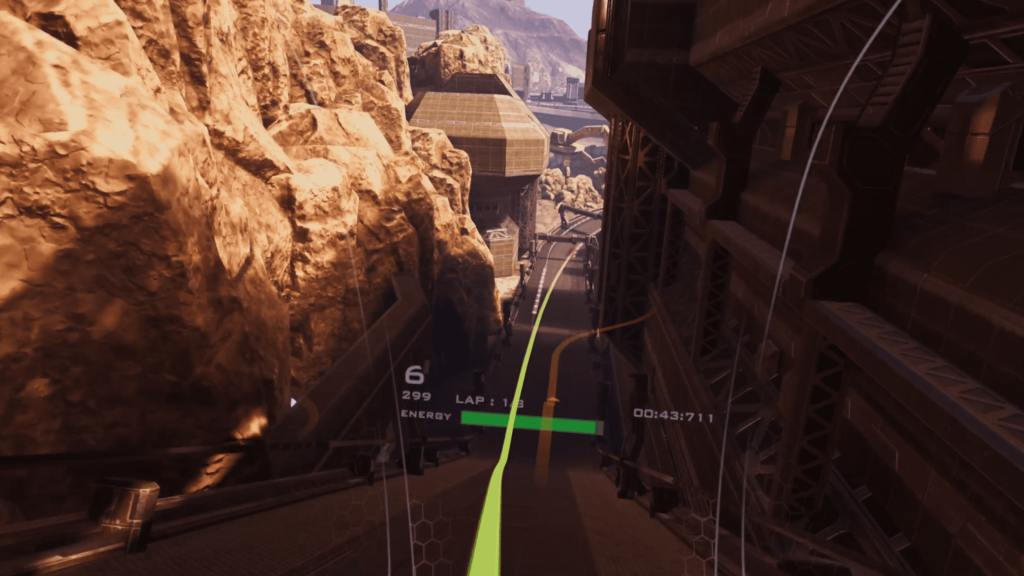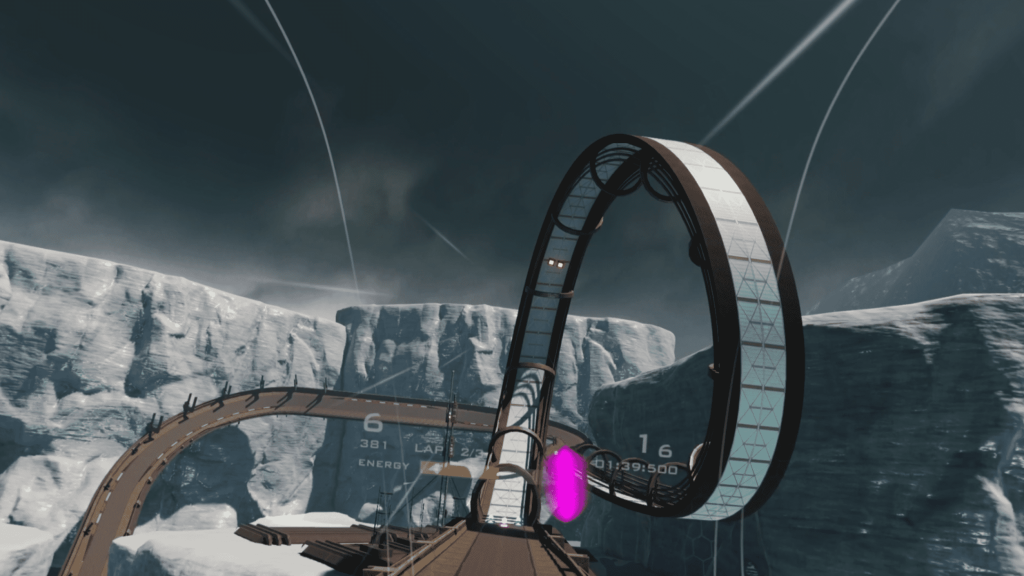V-Racer: Hoverbike Review (PSVR2)
Summary: V-Racer: Hoverbike on PSVR2 is a fast, intuitive, and highly polished futuristic racer that shines through its excellent controls, strong sense of speed, and generous customization options. While the track variety could use a bit more visual diversity, the overall package delivers consistently smooth performance, addictive progression, and surprisingly deep VR immersion. It’s one of the platform’s most engaging arcade racers and an easy pick for anyone craving high-velocity sci-fi racing in VR.
4
Turbo Trance
Fast, furious, and fully VR-ready, V-Racer: Hoverbike makes every turn a thrill! V-Racer: Hoverbike arrives on PlayStation VR2 as VertexBreakers’ long-running arcade racing project finally crosses the finish line on consoles. It’s published by Flat2VR Studios and released on November 4th, 2025. After years of iteration, starting with its Early Access debut on Steam back in April 2018, then hitting Meta Quest and PC earlier in 2025, the PSVR2 version lands as its most polished and fully featured edition. While Gran Turismo 7 remains the go-to for realism on Sony’s headset, V-Racer: Hoverbike fills the opposite niche with confidence. It’s a slick, stripped-down arcade racer built on speed, precision, and VR-driven intuition, delivering a clear reminder that “simple” isn’t the same thing as “shallow.”
Despite lacking a traditional narrative, V-Racer does sprinkle in light world-building to contextualize your travels. Each league offers short blurbs about the planets and regions you race through, touching on their distinct kinetic energy sources and why these high-velocity circuits exist. It’s ancillary, but it adds just enough flavor for anyone who likes a bit of lore behind their laps without bogging anything down.
The career mode is the heart of V-Racer, guiding you through its championship structure across leagues like Onboarding, Ignition, Milky Way, and Starfield, with additional content planned. Progression is refreshingly direct: earn medals in events to collect points, reach ten points or win the cup, and you’re on to the next tier. The supporting modes, Quick Race, Multiplayer, and the rotating Online Challenges, round things out with variety. And for those looking to tailor the experience, the game allows you to toggle multiple assist elements on or off, such as helmet view, directional indicators, and braking guides. It’s a smart system because it lets newcomers ease in comfortably while giving veterans a clean, HUD-free ride that heightens immersion.
V-Racer’s control implementation demonstrates a clear focus on precision and responsiveness. The game defaults to head-lean steering, asking you to guide the hoverbike by shifting your head and torso rather than your whole body. The onboarding is unusually clear for a VR title and actively encourages you to reposition your bike at the start of a race to find your most natural stance. Acceleration and braking use the Sense triggers, while combat abilities and energy trades are mapped to face buttons. For anyone seeking an even more tactile feel, counter-steer mode turns the controllers into virtual handlebars. Those who want something lower-impact can steer with the analog sticks or even use a one-handed layout. The versatility is impressive, and what matters most is that every control scheme feels sharp and immediate. I didn’t encounter any input inconsistencies, which is crucial for a high-speed racer. This reliability is a big part of why the game becomes so addicting.
Race types are diverse enough to keep sessions from blurring together. Standard lap races are complemented by time trials, Survivor mode (where the last rider each lap is eliminated), Neon-Runner obstacle challenges, and multiple combat-focused events. The combat mechanics themselves are intentionally lightweight with frontal missiles, homing shots, defensive shields, mines, EMP waves, and classic turbo pickups. Losing all your shield energy simply knocks you out temporarily rather than punishing you with long resets, which keeps the pace brisk. Against bots, these mechanics make races lively; against real players, they can turn chaotic in the best arcade-racing way. V-Racer’s multiplayer, complete with cross-platform play across PSVR2, Quest, and PC, makes matches easy to find, and few VR racers can claim the same.
The sense of speed is where V-Racer separates itself. This is a game that understands VR motion through the rush of diving into a curve, the weightless float of soaring through a jump, and the snap of a perfect apex. The PSVR2’s haptics help sell that sensation without ever overwhelming your head or hands. Combined with stable performance, it’s easy to fall into the “just one more race” cycle as you refine your turn-ins and learn how aggressively each track lets you push. The physicality is there if you want it, it’s surprisingly engaging to lean into corners, but the game is equally accessible to those who prefer a more stationary play style.
Beyond the racing itself, V-Racer packs a respectable suite of extras. The in-game clock is a small but hugely welcome feature; not every VR game remembers that real-world time still exists. Leaderboards encourage friendly competition, and the replay system is unusually robust, letting you view races from multiple angles, adjust playback speed, switch riders, and save highlights. Customization is another strong point thanks to the full VR livery editor. Extras are unlocked primarily through in-game currency earned by completing races and challenges across Career, Multiplayer, and Online modes. You can spend this currency on new bikes, suits, and helmets, while additional rewards come from random post-race prize selections or loot boxes, which offer bonuses like extra gold, unique liveries, or temporary gold multipliers for upcoming races. You can design bike skins, rider suits, and helmets using brushes, decals, stamps, and text tools, and the results in multiplayer lobbies are often impressive. It adds a personal investment that goes beyond performance; your ride becomes part of your identity.
Visually, V-Racer performs admirably on PSVR2. While the art style leans toward clean lines and futuristic simplicity, environments still offer depth and enough visual markers to maintain clarity even at high speeds. The tracks look good, the image remains stable, and performance is rarely an issue. The only frequent visual hiccup is a slightly abrupt “thump” when landing from large jumps, which doesn’t break the game but is noticeable the first few times. Track variety is the one area where the visuals feel constrained. The neon cities and cosmic highways look great, but some color palettes repeat, and a few environments blur together aesthetically. More distinctive biomes like lush green worlds, volcanic reds, or icy blues, would help future expansions feel more pronounced. Fortunately, new tracks are reportedly in production, so this critique may age well.
The audio experience delivers exactly what this type of racer needs. The soundtrack is full of energetic electronic tracks that match the game’s pace without overpowering it. Engines, impacts, announcer cues, and weapon effects all carry the right punch. Nothing here is groundbreaking in terms of what you will hear, but everything supports the momentum of the race.
Final Thoughts?
V-Racer: Hoverbike knows its lane and drives it with confidence. It’s fast, intuitive, stylish, and accessible without sacrificing depth. The controls are exceptional, the multiplayer scene is lively thanks to cross-play, and the career progression and track mastery loop make it dangerously easy to lose track of time. It’s not without areas for improvement. Track variety could be stronger and the occasional visual bump interrupts an otherwise smooth ride, but those issues never eclipse how consistently fun the game is to play. V-Racer: Hoverbike stands out as one of PSVR2’s most addictive racers, and for fans of futuristic speed or anyone who misses the Wipeout era, it’s an easy recommendation.


